Constantines play Wavelength at Ted’s Wrecking Yard in August, 2001. Photo courtesy of Wavelength.
Article originally published August 24, 2012 by The Grid online (TheGridTO.com).
In this edition of her nightlife-history series, Denise Benson revisits the beloved College Street venue that lit the fuse for Toronto’s post-millennial indie-rock explosion.
BY: DENISE BENSON
Club: Ted’s Wrecking Yard & Barcode, 549 College St.
Years in operation: 1997-2001
History: Ted Footman was no stranger to the stretch of College west of Bathurst when he set out to open second-floor venue Ted’s Wrecking Yard, with Barcode below it. Footman lived in the area, and had opened the nearby College Street Bar in the early 1990s. After splitting from his partner in that venture, Footman opened rock-bar hangout Ted’s Collision and Body Repair at 573 College in 1994. (It became known as simply Collision after Footman sold it.)
“Ted’s Collision was a bit of a shock for the neighbourhood,” Footman chuckles during a recent phone chat. “It was all supposed to be pasta and jazz, and all very quiet.”
For many of us living in the area—I rented on Brunswick, just north of College, for 17 years—Ted’s Collision was a welcome addition to the neighbourhood. What it wasn’t, despite Footman’s attempts, was a live-music venue. A 1995 City amendment to the area’s zoning by-law, ushered in by then-City Councillor Joe Pantalone, limited the size and “entertainment-type uses” of restaurants and lounges on College between Bathurst to Ossington, thus dashing Footman’s hopes of expanding Ted’s Collision to two floors.
Instead, Footman turned his attention to a two-floor spot at 549 College. Once home to a series of less-than-busy bars, the location had stood empty for some time.
“It was existing and licensed as a banquet hall, which meant it came with a liquor licence, so we were able to get around the new bylaw,” says Footman. “I thought, ‘Good—I’ll just take this existing place and do a much better live-music venue.’”
Ted’s Wrecking Yard and Barcode opened in July of 1997, with customers welcomed on both floors seven nights a week. Legal capacity was in the area of 200 people per floor. Of the name, Footman says: “Basically, if you can’t fix it over at Ted’s Collision, you go over to Wrecking Yard.
“Upstairs, Ted’s—as it said on the front door—was home of ‘Both kinds of music,’” Footman explains. “You could read that as ‘country and western’ or as ‘country and classical.’ Ted’s was the dark room, with loud rock ‘n’ roll and country, while Barcode downstairs was more of a terrazzo, a nice bright room—we did some classical shows that were really great. We once did Beethoven’s Fifth Concerto in the [adjacent] parking lot, but the rehearsals in the room were the most amazing thing.”
The brighter Barcode was a good spot to go read, grab a coffee, and generally hang out. The room, complete with a grand piano and round metal stage at the back, was filled with mismatched furniture and reclaimed materials before that became a codified College Street look.
A steep set of stairs took you up to Ted’s Wrecking Yard, a rectangular room painted black, with tire-track prints, rarely functioning toilets, a wooden floor, and a long bar running down one side. A set of couches looked out onto College while, at the south end of the room, behind a sizable stage, was a rarely used kitchen that acted mainly as the bands’ green room and impromptu jam space.
Footman had occasional run-ins with the city, especially as he was partly licensed as a restaurant, but didn’t often sell food.
“I tried with a French chef and had lobster and steak, but nobody trusted in it,” he says. “That didn’t work, so all we ended up with was a nut machine.
“I’d put bloody tables and chairs on the stage when I knew the City inspector was coming. He was pretty good; it was the City councillor who was trying to shut me down.”
Why it was important: Footman’s fiery personality, coupled with his aesthetic and preference for live music rather than DJs, made Ted’s and Barcode stand out on the strip. The rooms became magnets for the many musicians, artists, and lovers of indie culture who’d moved to the area. Art was hung, super-8 film festivals took place, and readings were held.
“Ted’s was fresh; there was an innate excitement about the rough-and-tumble aesthetic that related to—or was even out front of—what was beginning to happen culturally and artistically in town,” says musician Jason Collett, who performed there in many contexts, and hosted his Radio Mondays songwriters’ showcase events there.
“Historically, Toronto has such conservative roots,” Collett adds. “Ted’s stuck its neck out and shook off some of that past. I think that resonated in the music scene and beyond.”
Upstairs, Ted’s featured live music seven nights per week. Sound was so-so (“we had an old CNE PA in there, so it was a bit rough,” Footman says), but the bookings were spirited. The club’s first booker was Paul Laventhol, former guitarist for British psychobilly band King Kurt who’d relocated to Toronto and next played in The Texas Dirt Fuckers. Both bands played at Ted’s, as did a bunch of rockin’ roots-based acts, including The Backstabbers, who hosted Dodgy Mountain Music Mayhem on Thursdays for a stretch.
Downstairs at Barcode, live music could be found a few nights each week, with Footman’s beloved classical concerts eventually giving way to Terry Wilkins’ and The Swing Gang’s Wednesday weekly, and a Thursday residency held down by Lori Yates’ band Hey Stella.
The attention paid to Ted’s Wrecking Yard and Barcode picked up a great deal after Footman hired well-respected talent booker Yvonne Matsell in 1998, and gave her free rein.
“Ted’s Wrecking Yard was limping along as a local music bar [at the time],” recalls Matsell, who’d finished stints of booking for clubs including the Horseshoe Tavern, The Ultrasound, and Reverb.
“I didn’t have to conform to any musical genres, which gave me the ability to discover new talent and work with them, to build up an audience and gradually fill up the room.”
That she did. At a time when there weren’t a lot of quality venues prioritizing local indie acts, Matsell upgraded the sound system, took advantage of the room’s great stage and sightlines, and turned Ted’s into a showcase spot nurturing Toronto talent.
“Ted’s arrived just as the Toronto Renaissance did, and was the perfect mid-size room that the city needed,” enthuses Collett. “Ted was a real character and his bars reflected that, and with long-time booker Yvonne—the biggest sweetheart of a matron you could ever meet—they were a great team.”
Ted’s Wrecking Yard quickly became an indie haven. Acts like Collett, Feist, and Broken Social Scene—a band in which they were both members—played plenty in their early years.
“I love discovering new indie bands and helping them to climb the ladder, so that became a focus,” says Matsell. “Some other discoveries were Kathleen Edwards, The Weakerthans, The New Deal, Metric, Andy Stochansky, and Sarah Slean—all early in their careers. I was able to book bands there that created a really vibrant, thriving musical scene—a musical community, which is really important to stimulate creative juices in other new bands.”
Ted’s did help foster a culture of collaboration by providing a consistent place to play. Most influential local labels—like Teenage USA, Three Gut, Paper Bag, Blocks Recording Club, and Broken Social Scene’s Arts & Crafts—started up after Ted’s did, and most of their core acts graced that stage.
“For Broken Social Scene in the early days, it really felt like Ted’s was our venue, our scene,” says BSS co-founder Brendan Canning. “Looking back, it was important to feel some kind of ownership and be comfortable in a space where you were throwing a party for your friends. Like, ‘This is where we do what we do.’”
Canning estimates that BSS, in various incarnations, played seven or eight shows at Ted’s between 2000 and 2001.
“BSS once opened up a Ted’s show with a song called ‘The Stuck,’ which had such a long outro at the time, so the song probably went well over 10 or 12 minutes. Then we took a twenty-minute break. We all enjoyed that gag—Kevin [Drew’s] idea of course—an awful lot.
“Ted’s was also the first place where the Big Band all got together,” recalls Canning, who’s now busy with his recently revived Cookie Duster project and is writing the score to Paul Schrader’s film, The Canyons, starring Lindsay Lohan. “I can remember being choirmaster during the quiet moments of ‘It’s All Gonna Break‘ and thinking, this is really so much fun.”
“The Broken Social Scene shows were great,” enthuses Footman. “One night, Feist played downstairs with Peaches, and there must have been 20 people on the stage. It was so good; it went to three or four in the morning. I just locked the door, kept throwing beer at the band, and they kept playing.”
Broken Social Scene, in fact, played a number of their earliest shows as part of Wavelength, a genre-defying Sunday night showcase of underground music that launched at Ted’s Wrecking Yard on February 13, 2000 and ran there until October 21, 2001.
Inspired by nights like Sedated Sundays at the El Mocambo, ° (a.k.a. “Degrees”) at the Lion Club, and William New’s long-running Elvis Mondays, Wavelength was founded by a collective that included co-programmers and ‘zine co-editors Jonathan Bunce (a.k.a. Jonny Dovercourt) and Derek Westerholm (a.k.a. Paddy O’Donnell), fellow programmer Minesh Mandoda, Duncan MacDonell (a.k.a. emcee Doc Pickles), and a host of ‘zine contributors.
“The aim of Wavelength was to foster excitement around the local Toronto music scene, which at the time was pretty under-loved,” begins Bunce, who then also played in bands including Kid Sniper, Christiana, and Currently In These United States.
“This was pre-BSS, so there had really been no breakout successes from the local scene to put the city on the international music map. Though bands like The Deadly Snakes, Danko Jones, and Do Make Say Think were bubbling under, a lot of people still associated Toronto indie music with ‘wacky’ bands like Barenaked Ladies and Moxy Fruvous, or rootsier fare like the Lowest of the Low and Blue Rodeo. Most people with edgier, noisier, or more experimental musical tastes still glamourized bands from the U.S. and U.K.”
Each Sunday at Ted’s, Wavelength featured two live bands and a related scenester DJ who shared sounds ranging from noise-rock and free-jazz to indie-pop, shoegaze, math-rock and experimental electronic.
Peruse Wavelength’s archive of early shows, and you’ll find band names like Do Make Say Think, Constantines, The Fembots, GUH, Manitoba (now Caribou), Russian Futurists, Mean Red Spiders, Picastro, Deep Dark United, and The Hidden Cameras.
“I was stocking the fridge before that Hidden Cameras show and saw a tall, nerdy looking guy [band leader Joel Gibb] cutting holes into white sheets,” recalls then bartender Stephanie Comilang.
“I asked if he needed help, and he said, ‘Sure.’ Later into the night, the band performed with these ghost costumes singing about golden showers and banning marriage. It was the best.”
Now a filmmaker living in Berlin, Comilang also occasionally did projections, including for Final Fantasy and the Singing Saw Shadow Show, on Sundays.
“Working Wavelength was really interesting,” she says. “I sort of blindly entered into a pretty small, but established DIY music community. Jonny Dovercourt and the Wavelength people fostered an environment that wasn’t known yet outside Toronto, or for that matter Canada. It’s where I saw Peaches doing Peaches, with dildos, rapping about nastiness, and not giving a shit that the room was empty. It’s where I came to know what the Toronto indie-music scene was.”
Two other favourite moments for Bunce: “Michael Snow playing in a trio with John Oswald and Eric Chenaux, and also screening his 1967 classic experimental film Wavelength. And Vancouver’s Dan Bejar playing solo at his first Toronto show, under the name Destroyer.
Adds Bunce: “Ted’s and Wavelength felt like the start of a new music movement on College, one that was unabashedly nerdy and eager to share.”
Ted’s Wrecking Yard helped establish an audience for other indie ventures in the neighbourhood. Soundscapes—the record store across the street opened by Greg Davis in 1999—had a Ted’s section, for example, while the originally tiny Big Chill served ice cream largely to big kids late into the night.
Ted’s became both a clubhouse for musicians (says Matsell: “The Blue Rodeo guys seemed to look at Ted’s as a second home—Bazil Donovan and Bob Egan would get their bus to drop them off at the venue when they got back from a tour”) and a key venue for bands to be seen and potentially signed.
Who else played/worked there: “Now, all the bands that were playing there are on the CBC all the time,” says Footman. “It’s kind of nice to hear, but when Yvonne first started booking them, bands would be in for weeks in a row. There’s be nobody there, then 10 people, then 15, a hundred, and then 300.”
A condensed list of folks who joined Jason Collett at his Radio Monday showcases further confirms Footman’s CBC statement: Jian Ghomeshi, Kurt Swinghammer, Andrew Cash, Luke Doucet, Hayden, Jose Contreras, Kathleen Edwards, Carolyn Mark, and future Dragonette frontwoman Martina Sorbara are just some of the songwriters booked in by Collett after he launched the series in April, 2001.
“Radio Monday was about putting five or so musicians in a half circle on stage, sharing songs and stories, and being purposefully informal so that we could approach a kind of domestic intimacy in a club,” explains Collett.
“The series served a unique social function for a burgeoning community of musicians interested in getting a closer look at what their peers were working on.” (Collett now produces the similarly minded Basement Revue series at The Dakota Tavern, and will release his fifth solo album, Reckon, Sept. 25 on Arts & Crafts.)
Ted’s grew to be such a popular spot that established bands were happy to do multi-night residencies. Rheostatics played a number of such stints between 1999 and 2001.
“The biggest plus was that Ted’s was close to everyone’s homes,” says band co-founder Dave Bidini, whose parents grew up in Little Italy. “It was also upstairs, and upstairs clubs kinda rule, with music pouring into the streets. Footman was always loopy and easy to be around, and we could play pretty much as late and as long as we wanted. Some nights we didn’t stop till 3 a.m.”
The author and now leader of BidiniBand recalls, “Drummer Don Kerr’s last show with us was at the end of one of those runs. The Weakerthans had opened all seven shows, and, on the last night, we played for so long and were so loud and intense that we destroyed the sound system. Ted had to cancel a week of shows. We felt bad for that, in a way, but we were also sort of emboldened to have destroyed all that equipment. Also, crowds drank the bar dry pretty much every night and I know Ted really had to scramble and call in favours to keep it wet throughout the week.”
Yvonne Matsell also carries a number of Ted’s Wrecking Yard moments close to her heart.
“The Sadies’ New Years Eve shows were always brilliant fun,” she begins. “Richard Ashcroft of The Verve did his first solo showcase performance outside of the U.K. at Ted’s [in May 2000], with music press flying in from everywhere to cover the show. Richard was a major rock star at the time, but he was very down-to-earth.
“Sum 41, then very young, did a six-week residency of Tuesdays that went from a half-dozen attendees to packed-out nights. A&R men from the U.S. flew in to see and eventually sign them.
“I also remember a shy 15-year-old called Avril Lavigne being brought in by her then-managers to say, ‘Hello.’ She didn’t think I was very funny when I told her she couldn’t drink.”
As for other key staff at Ted’s and Barcode, bartenders included future weewerk label-head Phil Klygo, then just launching his Teenage USA Recordings imprint, and Kaili Glennon, now in country band The Pining. In-house sound techs Les Charbonne and Mark Finkelstein are mentioned fondly by Brendan Canning and others.
What happened to it: Ted’s Wrecking Yard and Barcode were closed Oct. 24, 2001. On a related tip, the nearby El Mocambo had recently been sold to Abbas Jahangiri and it was believed he would convert that legendary Spadina club into a dance studio. As is documented in a number of articles from that time (including here and here), former El Mo booker Dan Burke had made contact with the leaseholder of 549 College, with plans to open “The El Mocambo on College.” When Footman was late on rent, chains were put on the club’s doors.
“Originally, they were going to do an El Mo room downstairs, and I was going to keep upstairs, but it didn’t work out like that,” shares Footman. “I was getting a bit older, so staying out till three or four in the morning probably wasn’t the best. It was an okay time to get back into architecture so, really, I wasn’t that bitter.”
In a twist of fate, Burke encountered resistance from the City and was never able to obtain a liquor licence with a permit to present live entertainment at that address. The El Mocambo, of course, remained a club in its original Spadina location; Yvonne Matsell has been its booker for the last decade.
Footman now runs his own architectural practice, doing “everything from heritage work to really modern projects.” He’s worked on libraries and houses, but has also left his stamp on more than a dozen restaurants and clubs, including The Social, 3-Speed, Reposado, and Woodlot. He ran for City council in 2010, but has no plans to run again. “This ward seems well taken care of with Mike Layton.”
549 College remained vacant for 10 years. Plans to convert it into boutique hotel Inn On College were never fully realized. It opened as an LCBO last December.
“Ted’s will always be the spiritual home of Wavelength,” says Jonathan Bunce, the Founding Director who helped lead the series to Lee’s Palace, then Sneaky Dee’s, and now into its current capacity as a more selective, site-specific, concert-promotion organization, hosting events like the recent ALL CAPS! Island Festival.
“I always felt a little glum when I passed by the building, and felt a strange satisfaction in it remaining vacant for the better part of a decade,” says Bunce. “In some ways, I’m glad that it became an LCBO; 549 College is still providing good cheer for the neighbourhood.”
Thank you to Brendan Canning, Dave Bidini, Jason Collett, Jonathan Bunce, Stephanie Comilang, Ted Footman, and Yvonne Matsell, as well as to Darrin Cappe (Rheostatics archivist), Heidi Krohnert and Kieran Roy at Arts & Crafts, and Stuart Berman.

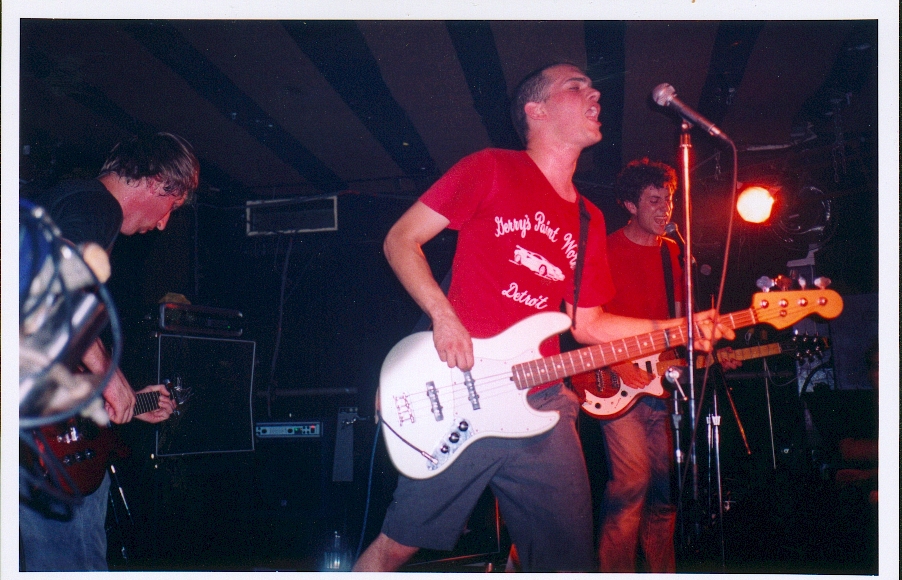
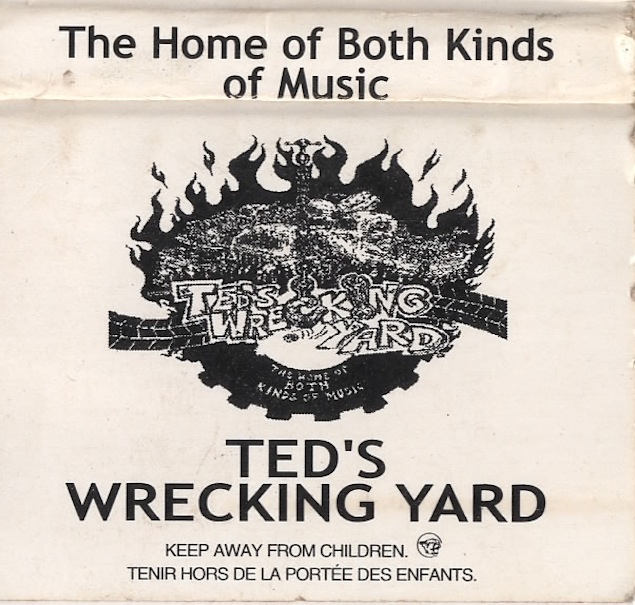
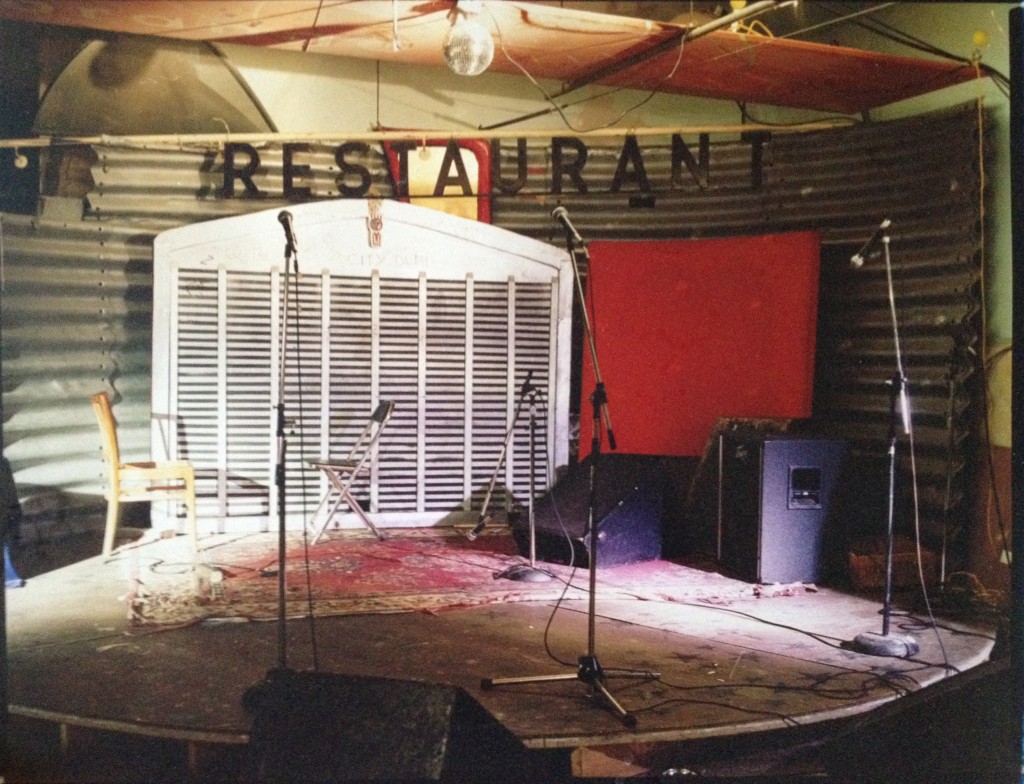
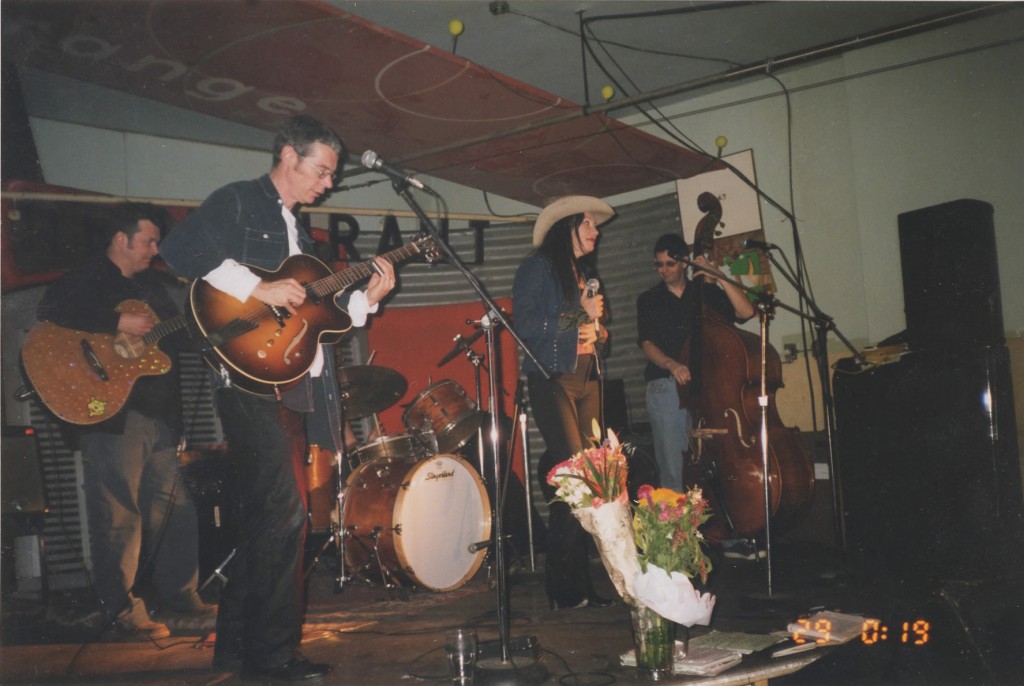
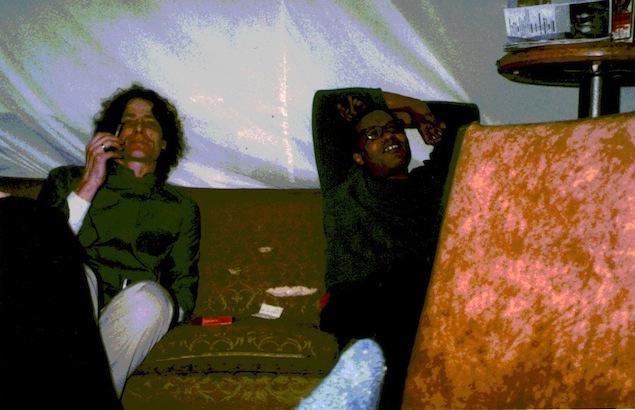
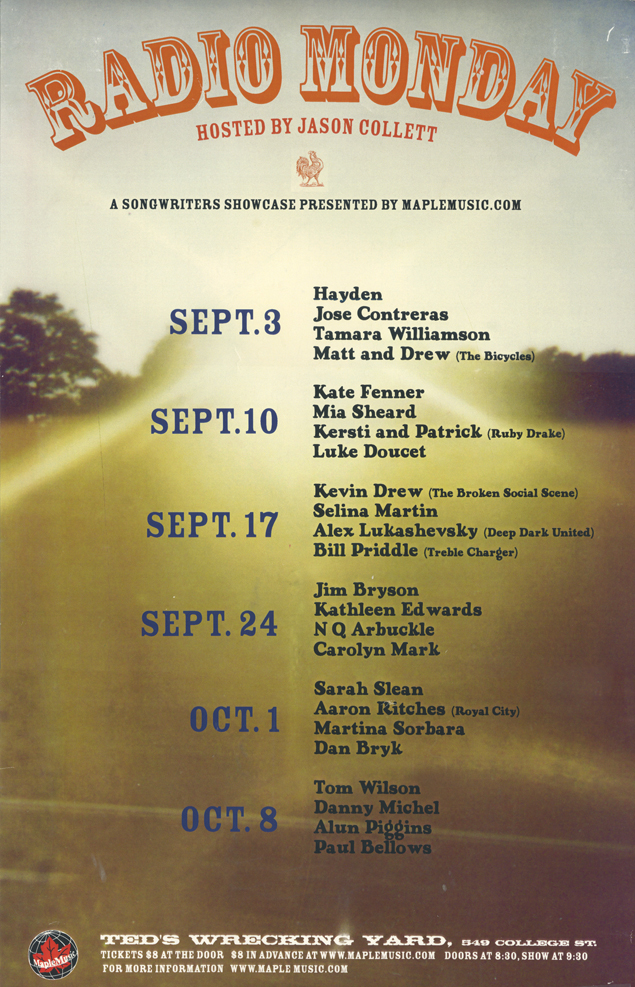
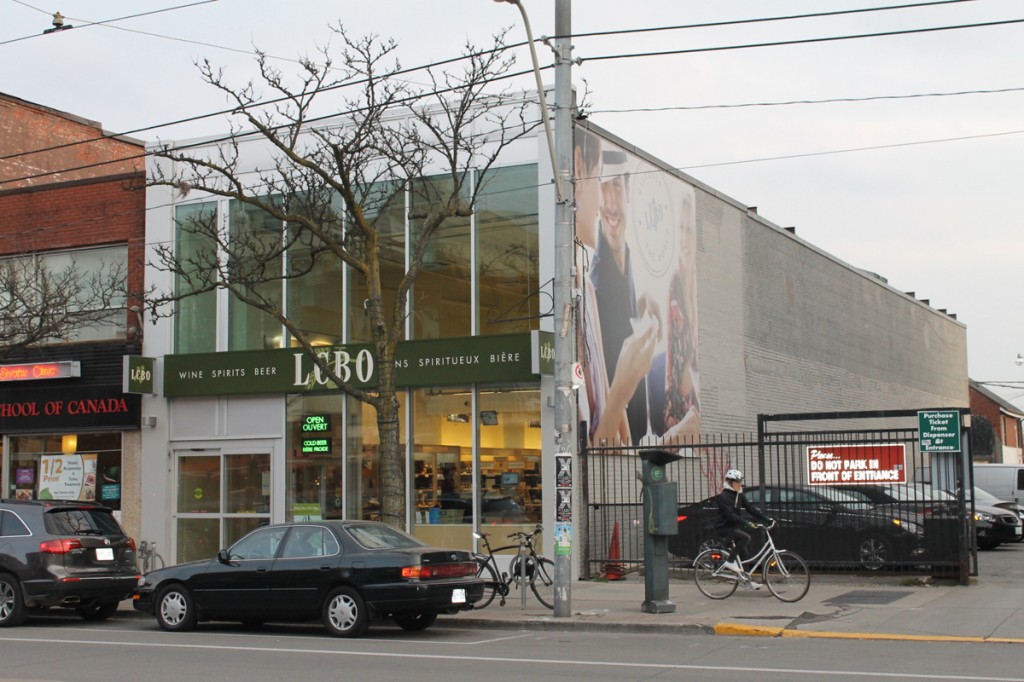
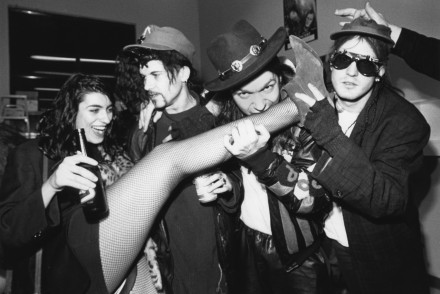
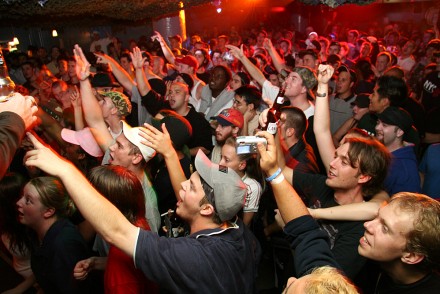
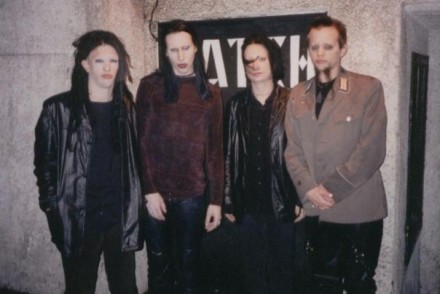

3 Comments
[…] series and arts organization, Wavelength Music Reflecting on the concert series’ infancy with The Grid in 2014, co-founder and programmer Jonny Dovercourt recalled Snow screening Wavelength and […]
Ted’s felt like home.
https://www.youtube.com/watch?v=N8BTJikB45Y
All comments in the string below have been republished from their original appearance on The Grid website. We’re including the readers’ comments as they add to these Then & Now stories. We look forward to reading new comments here as well.
Lori Yates
First of all, in the picture of Hey Stella..thats Holly Cole, not me! I might have worn a cowboy had if I had one but I’ve never had black hair! She would sit in with us occasionally and sing some country tunes including “Just Someone I Used to Know” the place would go nuts! I have many great memories of Ted’s Collision but probably my best is I got MARRIED there! Ceremony and reception. Yup, Ted graciously offered up the bar free of charge for us! And he kept Hey Stella playing there through thick and thin. He was our patron saint! Love, love, love Ted! 8:27 am on August 26, 2012
Rob
I enjoyed many Thursday nights being wowed by Lori, David, Michelle and Bazil playing joyous music. We had immense fun listening to Lori, with one of the most achingly amazing voices, lifting us into revery with Carmelita or Jolene. Living in 3-D: Drinking, drawing in our sketchbooks, and dancing! Also, Kevin Breit created magical evenings playing unplugged with his rarely seen band FolkAlarm. Empty room or not, the music at Wrecking Bar and Barcode was often transcendent. 1:01 pm on August 27, 2012
Crocky Teasdale
I played my favorite shows ever at Ted’s! Great Article. 4:35 pm on August 24, 2012
smartygirl
so many fond memories of this place! can’t count how many nights were spent there. 2:32 pm on August 24, 2012